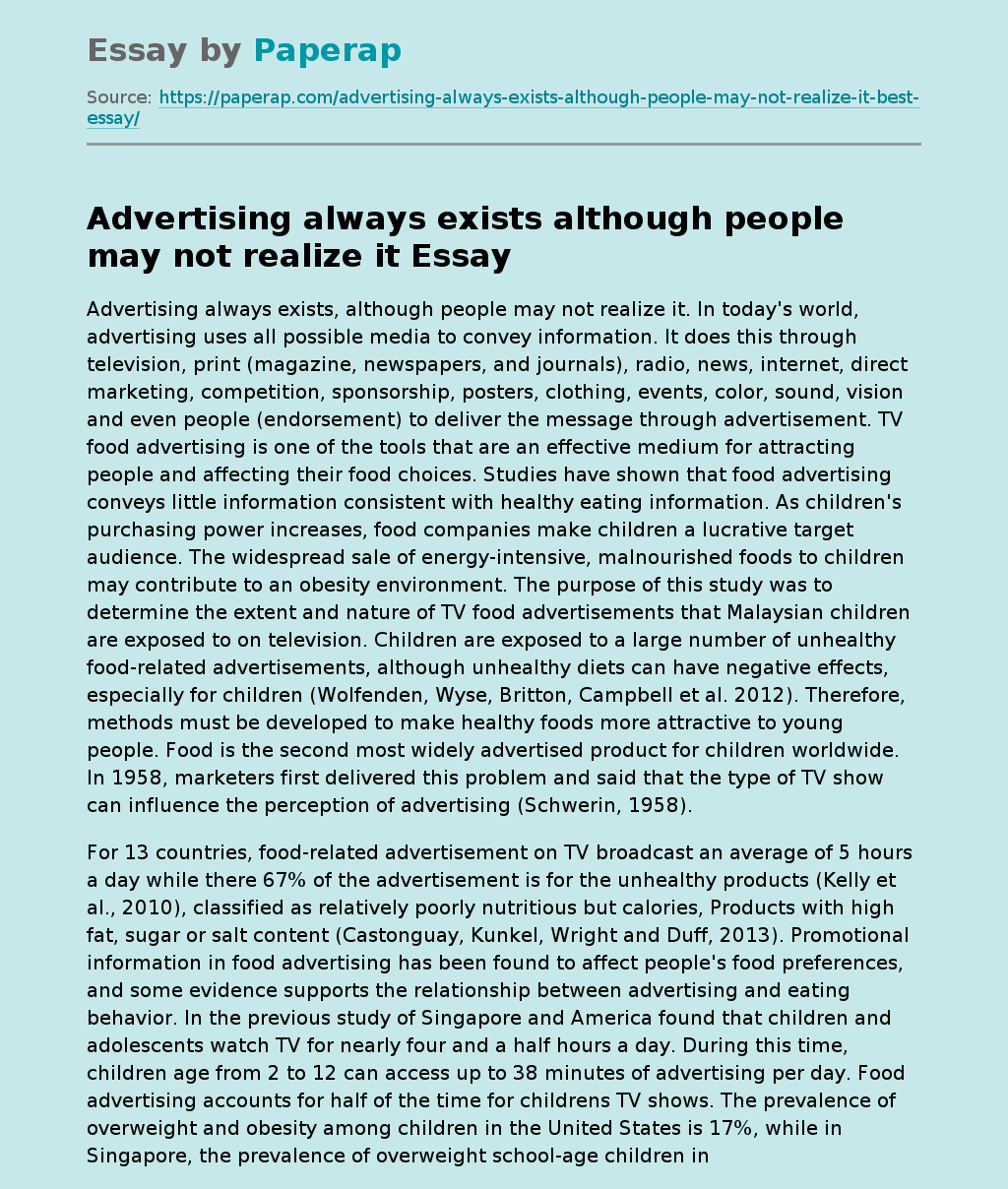Advertising always exists although people may not realize it
The following sample essay on “Advertising always exists although people may not realize it”: аdvertising always exists, although people may not realize it. In today’s world, advertising uses all possible media to convey information. It does this through television, print (magazine, newspapers, and journals), radio, news, internet, direct marketing, competition, sponsorship, posters, clothing, events, color, sound, vision and even people (endorsement) to deliver the message through advertisement. TV food advertising is one of the tools that are an effective medium for attracting people and affecting their food choices.
Studies have shown that food advertising conveys little information consistent with healthy eating information.
As children’s purchasing power increases, food companies make children a lucrative target audience. The widespread sale of energy-intensive, malnourished foods to children may contribute to an obesity environment. The purpose of this study was to determine the extent and nature of TV food advertisements that Malaysian children are exposed to on television. Children are exposed to a large number of unhealthy food-related advertisements, although unhealthy diets can have negative effects, especially for children (Wolfenden, Wyse, Britton, Campbell et al 2012).
Therefore, methods must be developed to make healthy foods more attractive to young people. Food is the second most widely advertised product for children worldwide. In 1958, marketers first delivered this problem and said that the type of TV show can influence the perception of advertising (Schwerin, 1958).
For 13 countries, food-related advertisement on TV broadcast an average of 5 hours a day while there 67% of the advertisement is for the unhealthy products (Kelly et al 2010), classified as relatively poorly nutritious but calories, Products with high fat, sugar or salt content (Castonguay, Kunkel, Wright and Duff, 2013).
Promotional information in food advertising has been found to affect people’s food preferences, and some evidence supports the relationship between advertising and eating behavior. In the previous study of Singapore and America found that children and adolescents watch TV for nearly four and a half hours a day. During this time, children age from 2 to 12 can access up to 38 minutes of advertising per day. Food advertising accounts for half of the time for childrens TV shows. The prevalence of overweight and obesity among children in the United States is 17%, while in Singapore, the prevalence of overweight school-age children in 2006 was 9.5% (Liyan, Kayemehta, Mun). Besides, the previous study found that TV and food-related Indian advertising promotes fast food, sugary cereals and other foods and beverages that have higher calories, fats, sugar, sodium and fewer nutrients. In recent years, India’s food and beverage industry have seen children as the main target market. Therefore, children watch television for a long time and their opportunities to watch the advertisement is high so the food companies are interested in children as consumers. (Mark, S Vijayalakshmi, Vasantha, Kanchana T, Wilfred, 2016). Furthermore, there is a previous study in Brazil also found that childrens eating behavior affect by the TV food advertisement. Their study purposed to evaluate the exposure of television food advertising give impact on eating behavior and nutritional status of children and adolescents. They developed this study among 116 students from a private school as they found that the children and adolescents gain weight sharply and lead to obesity in recent years. (Suzane, Paula, Luana, 2012).
Advertising always exists although people may not realize it. (2019, Dec 17). Retrieved from https://paperap.com/advertising-always-exists-although-people-may-not-realize-it-best-essay/

